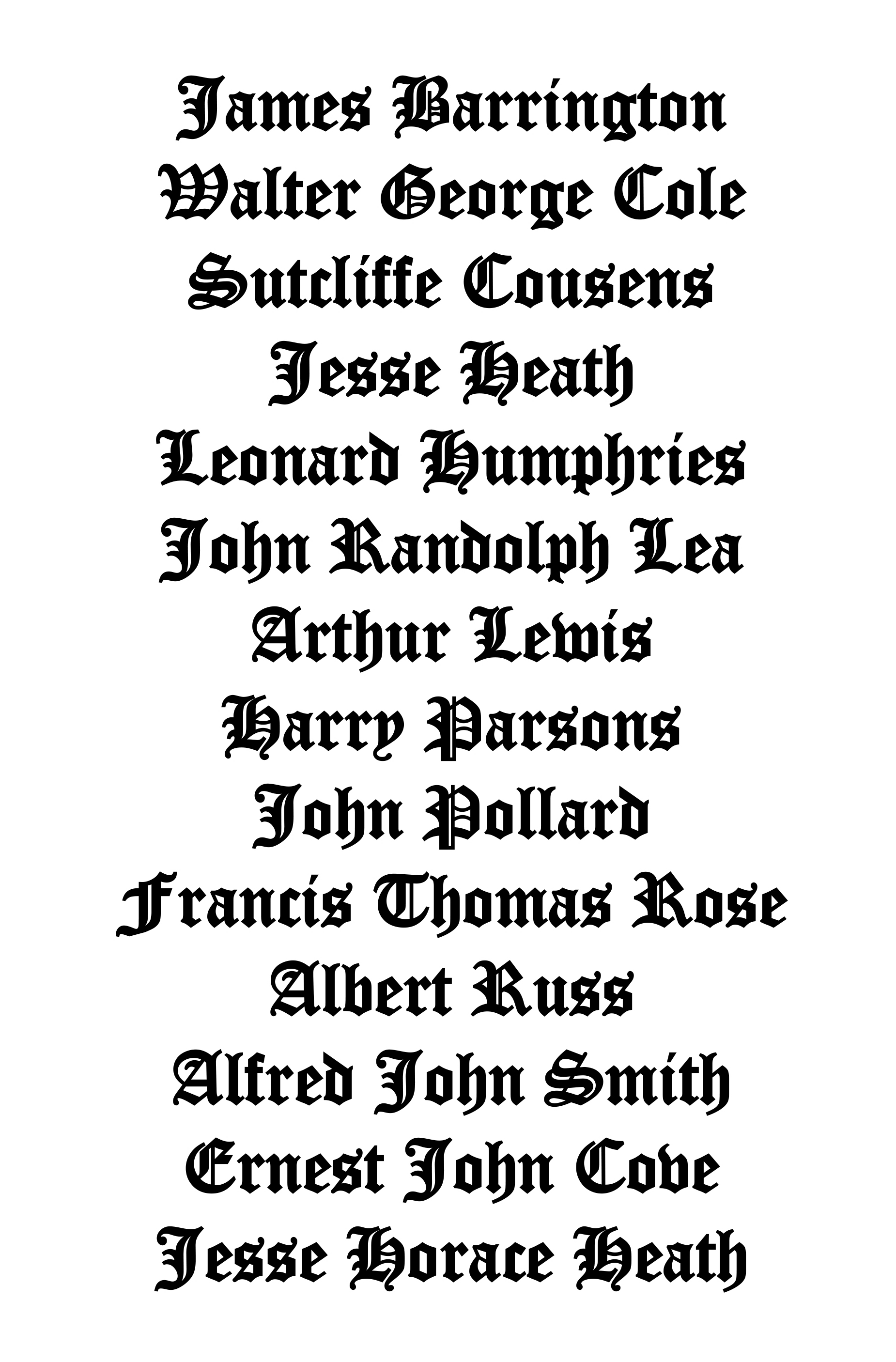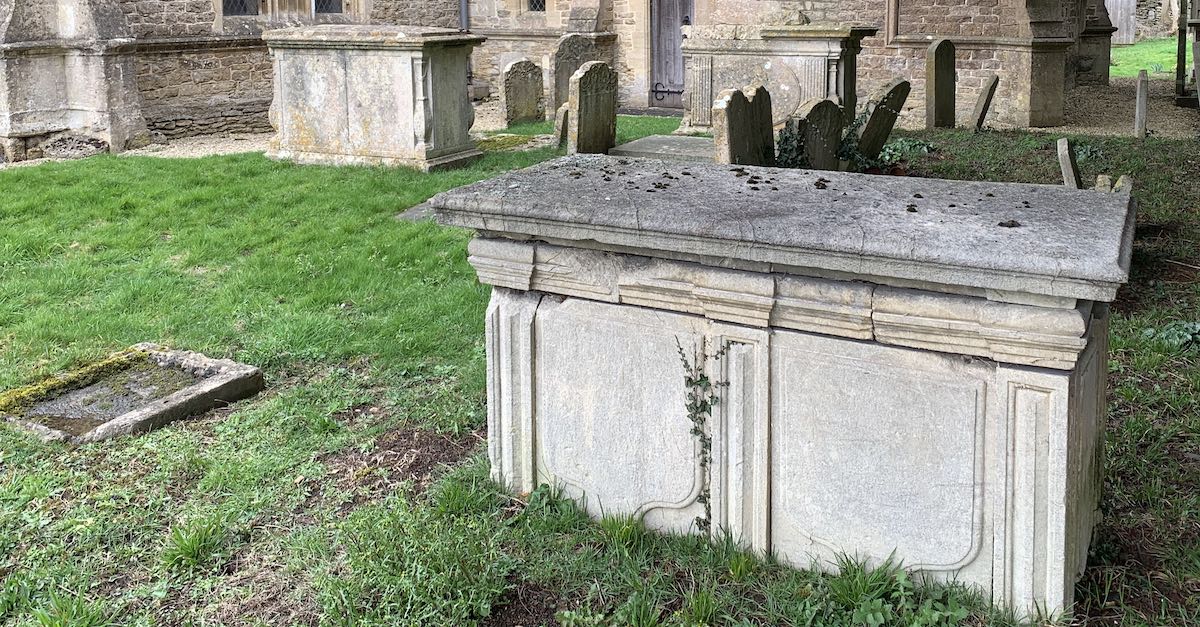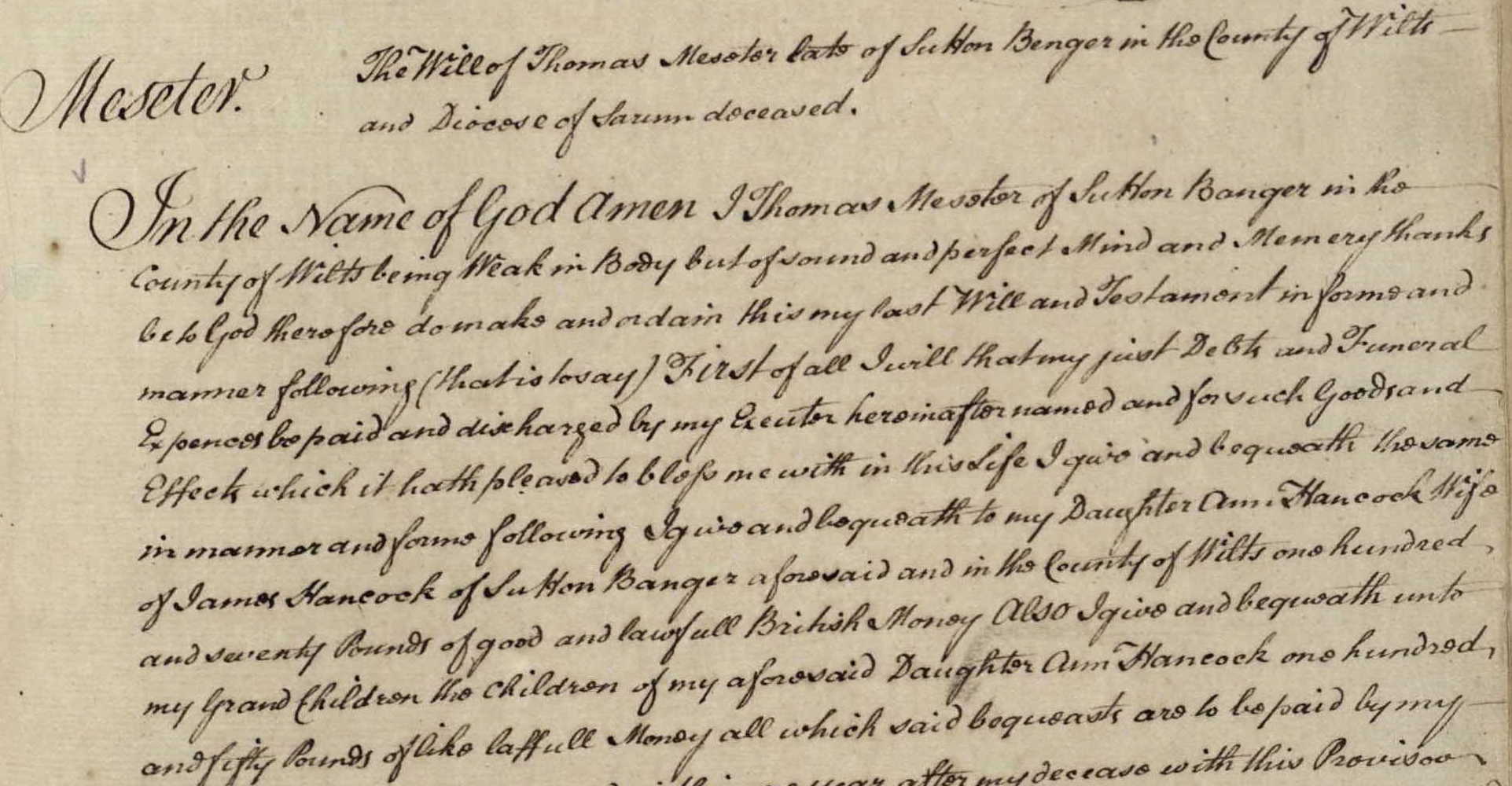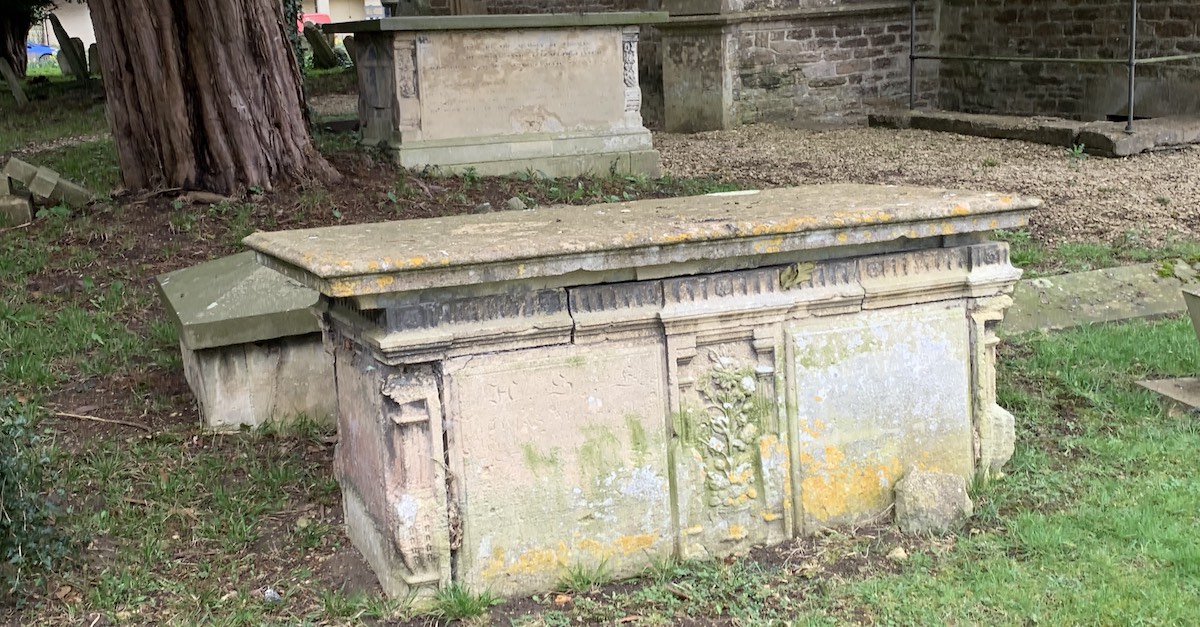Grade II Listed Monuments in the Churchyard
Page last updated: 10 October 2025, 2:25pmEnglish Heritage has three Grade II ‘Listed Buildings’ in the Sutton Benger Churchyard. The details are as follows
Churchyard Cross in the Churchyard
War memorial cross, 1920 by H. Brakspear, on stone steps, probably the base of medieval cross. Cross has square base, octagonal tapering shafts, foliate carving to cap and small gabled and pinnacled top tabernacle with carved Crucifixion to front.
The monument is in honour of all the men from Sutton Benger who gave their lives in the two World Wars.

Three Monuments in the Churchyard, south of the Church
Three chest tombs, late C18 and early C19, ashlar. From north: a) Unidentified late C18 monument with raised oval plaque each side flanked by fluted strips to south and by plain strips to north. Baluster angles. Moulded base and cornice. b) Engles monument, early C19, with ornamented baluster angles, moulded base, ridge capstone and two plaques each side. Inscriptions to J. Engles Sr died 1830 and R. Engles died 1840. c) Hibbard monument, later C18 with two shield plaques each side, fielded centre and angle strips, moulded base and cornice with pulvinated frieze. Inscription to Elizabeth Hibbard died 1816.
The photo shows the three tombs, from the south. All carvings have faded, even more than when the English Heritage records were written.

The 'Engles' monument is an enigma, as there are no families of that name listed in any other documents; there are certainly no deaths / burials of that name listed in the Parish Registers. It might possibly be a mis-reading (of a faded inscription) of the 'Shingles' family; however, although there were families of that name in the village in the 1700s and 1800s, there were no 'Shingles' deaths in 1830 or 1840.
The Hibbards were farmers, possibly living in a house just west of Bellside. Elizabeth was the widow of Richard Hibbard, who had died in 1801.
Three Monuments in the Churchyard, east and north east of the Church
Three chest tombs, C18 and early C19, ashlar. From south: a) about 8m east of chancel, unidentified early C18 monument with two sunk panels each side, one each end and moulded capstone. b) about 2m north east of chancel, Lanfear monument, c1845, ashlar with black and red colouring. Flattened lyre ends with low relief classical sarcophagus, and heavy scrolls. North side single plaque, two south plaques with urn in niche and descending dove between. c) about 4m north of b), Messiter monument, later C18, with two raised plaques each side, baluster angles and similar flat balusters on inner side of plaques. Centre carved flower in vase. Moulded base and cornice with fluted frieze. Inscription to Thomas Messiter died 1783.
The photo shows the Messiter tomb in the foreground, with the Lanfear tomb behind. The Messiters were painters, decorators and plumbers throughout the 1700s and 1800s. Thomas Messiter (or 'Meseter') left a Last Will and Testament.

The Lanfear family were farmers; John Lanfear had Church Farm in the early 1800s. The tomb might have been in honour of his son, Thomas, who died aged only 25 in 1845.

Archives and Facts
Discover more articles in the history index.
History Index